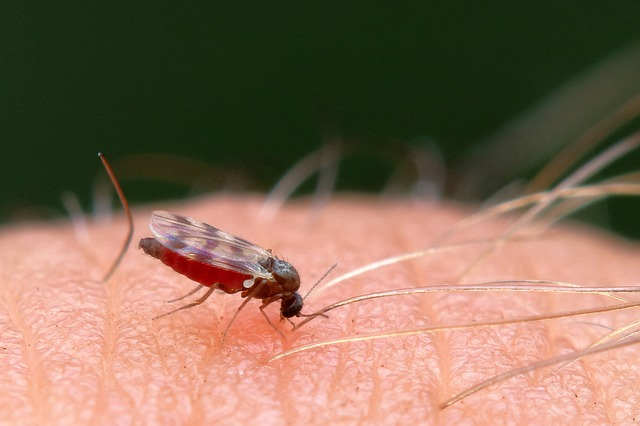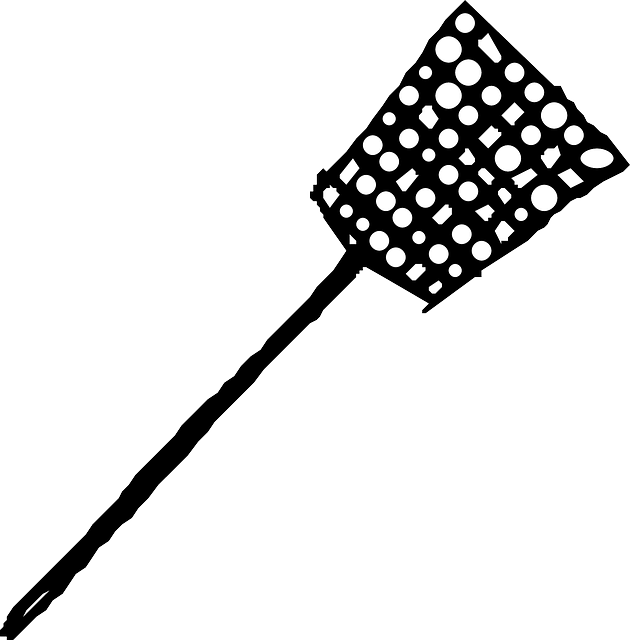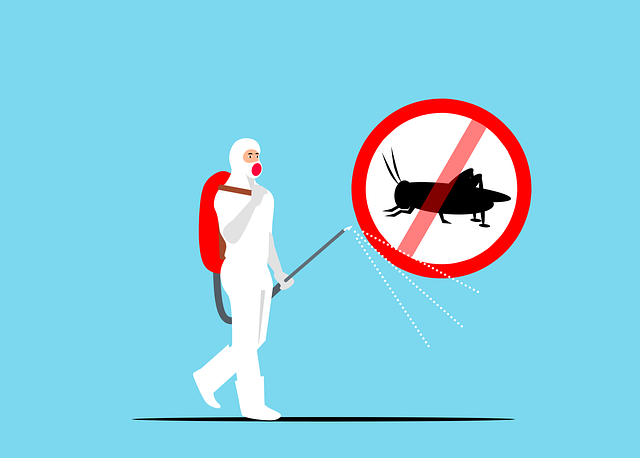Are you tired of those pesky gnats invading your home, ruining your fruit, and annoying you every time you try to enjoy a quiet evening? We understand the frustration, and that’s why we’ve created this ultimate guide on how to get rid of gnats once and for all. Armed with this knowledge, you’ll be able to identify, eliminate, and prevent future gnat infestations with ease.
Short Summary
- Identify gnat types and infestation locations to determine the best solution.
- Use natural methods such as vinegar traps, essential oils, overripe fruit lures or commercial products for control.
- Take preventive measures like proper drain maintenance and plant care. Call a professional when needed.
Identifying Different Types of Gnats
Before you can effectively get rid of gnats, it’s crucial to know what type of gnat infestation you’re dealing with. Gnats are tiny flying insects that come in various forms, such as fruit flies, fungus gnats, and drain flies. Each species has different habits and breeding grounds, making it essential to identify the culprits to determine the best solution for your gnat problem.
Fruit flies are small flies that are attracted to rotting fruit and often found hovering around fruit bowls. They lay their eggs on decaying fruits, making them a common household nuisance. Fungus gnats, unlike most other gnat species, have unusually long legs. They are generally a glossy black in colour. These gnats are attracted to the moist soil in potted plants, where gnats lay eggs. To prevent these pests, ensure that your fruit bowl is free of rotten fruit.
Drain flies, also known as drain gnats or sink flies, are usually found in sink drains and garbage disposals. They lay their eggs in the organic matter that builds up in these areas, making them a common problem in bathrooms and kitchens. It’s important to note that while gnats can be a nuisance, they are generally not harmful to humans.
So, how can you tell which type of gnat is causing your infestation? The main indication of a gnat infestation is the presence of multiple gnats flying around when you turn on the sink, move a houseplant, or disturb a piece of old fruit. Pay close attention to their appearance and the location of the infestation to determine the type of gnat you’re dealing with.
Proven Methods for Eliminating Gnats
Now that you’ve identified the type of gnat infestation you’re facing, it’s time to take action and eliminate them. In this section, we’ll introduce tried and true methods for getting rid of gnats, including DIY vinegar traps, essential oil solutions, and overripe fruit lures.
These strategies will help you take back control of your home and put an end to your gnat problem, including dealing with gnat larvae.
DIY Vinegar Traps
One of the most popular and effective ways to get rid of gnats is by creating a DIY vinegar trap. This homemade solution uses apple cider vinegar, sugar, and dish soap to attract and kill gnats. To make this trap, simply:
- Combine warm water, apple cider vinegar, sugar, and liquid dish soap in a bowl.
- Place the mixture near the gnat infestation.
- Watch as the gnats are drawn to the sweet smell and become trapped in the sticky dish soap.
For added efficiency, you can create a gnat trap by following these steps:
- Take a small bowl and fill it with apple cider vinegar or red wine vinegar.
- Add a few drops of dish soap to the vinegar and mix it well.
- Cover the bowl with plastic wrap and puncture a few small holes in the top.
- Place the trap in the areas where you’ve observed the highest concentration of gnats to maximize its effectiveness.
This wine trap will attract the gnats to the vinegar, and the dish soap will prevent them from escaping.
Remember to change the trap regularly to maintain its efficacy. With consistent use, a DIY vinegar trap can significantly reduce or even eliminate your gnat infestation, leaving you free to enjoy your home without the constant annoyance of these tiny pests.
Essential Oil Solutions
If you prefer a more natural approach to gnat control, essential oils can be an effective solution. Peppermint oil, in particular, is known to repel gnats and can be easily incorporated into a homemade gnat spray. To create an essential oil solution, simply combine peppermint oil with water and dish soap in a spray bottle. This mixture can be sprayed near windows and doors to deter gnats from entering your home.
Additionally, other essential oils such as:
- geranium
- citronella
- lemongrass
- garlic
Can also be effective in repelling gnats. Using essential oils not only helps to keep gnats at bay, but also provides a pleasant aroma in your home. This natural, chemical-free approach to gnat control is a great option for those who want to avoid harsh chemicals and maintain a healthy living environment.
Overripe Fruit Lures
Another effective method for getting rid of gnats is to set up an overripe fruit lure. This simple trap uses rotting or overripe fruit to attract and trap gnats, making it an easy and cost-effective solution. To create this lure, follow these steps:
- Cut up overripe fruit and place it inside a bowl or cup.
- Cover the container with plastic wrap.
- Create tiny holes in the wrap, allowing the gnats to enter but making it difficult for them to escape.
Regularly check the trap and dispose of its contents when a significant number of gnats have been captured. Replace the fruit as needed to maintain the trap’s effectiveness. Overripe fruit lures are a simple yet powerful way to reduce gnat infestations in your home without the need for chemicals or expensive products.
Gnat Prevention Strategies
While eliminating gnats is crucial, it’s also important to implement prevention strategies to avoid future infestations. In this section, we’ll discuss how proper drain maintenance and adequate plant care can help keep gnats at bay and maintain a gnat-free home.
Proper drain maintenance is essential for keeping gnats away. Make sure to regularly clean out your home.
Proper Drain Maintenance
Keeping drains clean is an essential part of gnat prevention, especially for fruit flies and drain flies that lay their eggs in sink drains and garbage disposals. By utilizing the following methods, you can eliminate gnats and their larvae from your drains and prevent future infestations:
- Pour boiling water down each drain or garbage disposal a few times a day for a few weeks until the gnats have been eradicated.
- If boiling water isn’t enough, you can also add baking soda to the mix for added effectiveness.
- Regular drain maintenance not only helps to prevent gnat infestations but also keeps your home clean and hygienic.
Remember to exercise caution when using drain cleaner or bleach, as these chemicals can be hazardous. Always wear gloves, safety glasses, and a mask to avoid contact with the chemicals. By maintaining clean drains, you’ll create an environment that’s less attractive to gnats and their larvae, keeping your home free of these pesky pests.
Adequate Plant Care
Proper plant care is another key component of gnat prevention, particularly for fungus gnats that thrive in moist soil. By allowing your plants’ soil to dry out between watering and using sticky traps or nematode worms to control gnats around your plants, you can help prevent gnat infestations.
In addition to monitoring your plants’ watering schedule, it’s also important to repot your houseplants in fresh soil regularly and avoid overwatering them. If gnats continue to appear despite your best efforts, consider applying an indoor-friendly pesticide as a soil drench to eliminate gnats and fungus.
By maintaining proper plant care, you’ll create a healthier environment for your plants and a less inviting one for gnats. This will help keep your home free of these annoying insects and ensure that your plants remain healthy and vibrant.
Commercial Gnat Control Products
If DIY solutions aren’t providing the desired results, there are various commercial gnat control products available to help eliminate gnats in your home. These products include bug zappers, sticky traps, and chemical sprays.
Bug zappers are devices that use an electric charge to kill gnats, making them an effective method for deterring biting gnats in your yard. Sticky traps, on the other hand, are designed to attract and trap gnats, making them a quick and easy solution for eliminating gnats in your home, especially when placed near fruit bowls.
Chemical sprays, such as Hot Shot Kitchen Bug Killer, can also be used to eliminate gnats in your home. However, it’s essential to exercise caution when using chemical sprays, especially if there are small children or pets in your home. Always read and follow the manufacturer’s instructions before applying any chemical spray.
When to Call a Professional Pest Control Service
While the methods discussed above can be effective in eliminating gnats, there may come a time when it’s necessary to enlist the help of a professional pest control service. If your gnat infestation is substantial and other strategies have been unsuccessful, it’s time to call in the experts.
Professional pest control companies possess the necessary tools, expertise, and chemicals to effectively address your gnat problem. They will develop a tailored treatment plan for your residence, ensuring that the infestation is properly addressed and eliminated. The cost range for professional gnat extermination services typically falls between $100 and $450.
It’s important to remember that enlisting the help of a professional pest control service is an investment in the health and comfort of your home. By addressing your gnat infestation in a timely and effective manner, you’ll be able to enjoy a gnat-free environment and prevent future infestations.
Summary
In conclusion, getting rid of gnats requires a combination of identification, elimination, and prevention. By understanding the different types of gnats, employing proven methods such as DIY vinegar traps, essential oil solutions, and overripe fruit lures, and maintaining proper drain maintenance and plant care, you can effectively eliminate and prevent gnat infestations in your home. If all else fails, don’t hesitate to call in professional pest control services to ensure a thorough and lasting solution. With these strategies in hand, you’ll be well on your way to enjoying a gnat-free home.
Frequently Asked Questions
What kills gnats immediately?
Killing gnats quickly can be done by mixing half a cup of isopropyl alcohol and a teaspoon of dish soap in a spray bottle, and spraying it directly on the gnats.
This homemade solution will effectively eliminate the gnats.
How do I get rid of flying gnats in my house?
To get rid of flying gnats in your house, create a vinegar trap by mixing apple cider vinegar, sugar, and dish soap in a bowl and placing it near where the gnats are. The solution will attract the gnats, and the dish soap will prevent them from escaping.
Why am I getting so many gnats in my house?
Gnats are attracted to moisture, sweet scents from fruit, organic matter, and other warm, moist areas like sink drains and garbage disposals. Consequently, too much moisture in potted soil, unsealed produce, fresh flowers, houseplants, food spillage, open or overflowing garbage cans, and sink drains can all be potential causes for why you’re getting so many gnats in your house.
These areas can be breeding grounds for gnats, so it’s important to keep them clean and dry. Make sure to empty and clean out any standing water, seal any produce, and keep your garbage cans tightly sealed. Additionally, you can also purchase a laptop.
How do you get rid of gnat infestation?
To get rid of a gnat infestation, use bug zappers, vinegar traps, wine traps, candle traps, drain cleaners and bleach, reduce watering, or set up sticky paper or cards.
These methods have been proven to be effective in trapping and killing the gnats.
Why is my house full of gnats?
Gnats have likely found their way into my house by slipping through cracks or holes in the foundation, walls, windows, or doors. They can also be attracted to ripening fruit, organic matter in drains, open garbage cans and houseplants, as well as unsealed produce and fresh flowers.
Dirty kitchen sink drains can also provide food, water, shelter and breeding sites for many fly species.




